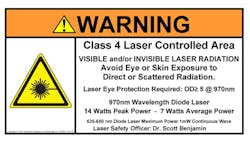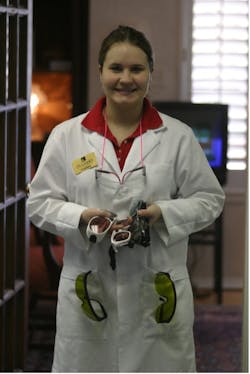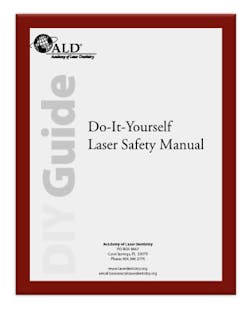In the world of laser dentistry, one thing is absolutely critical: laser safety. If you don’t learn anything else from my articles, please at least make sure that you are wearing the correct wavelength eyewear when using your laser! Let’s investigate some of these things and why they are so critical.
Lasers, primarily diode lasers, are attracted to dark pigmentation. For example, the retinal portion of the eye is dark, allowing diodes to potentially cause damage to the eyes. I hope this article can help clear up any confusion.
Read more about lasers in this series …
So, you want to be a laser dental hygienist?
Which dental laser should I choose, and what can I use it for?
What type of training do dental hygienists need to use lasers?
What is the difference between LAPT and LBR?
All lasers are class IV lasers, which means they all have the potential to cause damage without proper training on their safe use. Here are some things to consider: How far around the laser do clinicians need to have eye protection? What things could be reflective in your clinical environment?
A laser safety officer
Every office should have a laser safety officer (LSO) who oversees all details about the laser. The LSO sets up standard operating procedures, understands the operational characteristics of the laser, knows output limitations of the device, supervises team education and training, posts warning signs, as well as many other tasks.
Laser eyewear protection
When a practice purchases a laser, study the owner’s manual to understand how the laser works. Always remember to wear laser-specific eyewear. Make sure the eyewear you choose doesn’t have any scratches, chips, or cracks in the lenses. The eyewear needs to have side shields and should be first on/last off for patients and anyone else in the room. Choose a mask that is a minimum of 0.1 microns (level 3 mask); an N95 or KN95 is also acceptable.
When using a dental laser, we need to remove the plume of toxins generated from the tissue in the patient’s mouth. This is accomplished by using an HVE during every laser procedure, not just with the saliva ejector.
Other ways to protect people outside the operatory are to make sure the correct warning sign is posted when the laser is in use and keep anyone from entering the room without proper eyewear. When the laser is in operation mode, you’ll hear a tone from the laser as a warning to not enter as well.
Accidental exposure and documentation
In the event of an accidental exposure, the patient or others who are in the room should be checked out by an ophthalmologist. Document the incident in the patient’s chart as well as in an office journal.
After using any laser, note its use in the patient’s chart along with this information: fiber size/spot size, tip shape and size, emission mode (continuous/pulsed, energy/power settings), time of exposure, and the eye protection that was worn. You can also document any other information you feel is pertinent.
Resources for laser training
With any new tool or device, education is imperative. Having everyone’s questions answered before using the laser makes everything easier. The Academy of Laser Dentistry (ALD) is a great resource for laser courses and any specifics about how to help hygienists work within their scope of practice. ALD will be offering an introduction to laser safety course soon; check their website for more information.
Editor’s note: This article first appeared in Through the Loupes newsletter, a publication of the Endeavor Business Media Dental Group. Read more articles and subscribe to Through the Loupes.
About the Author
Angie Wallace, RDH
Angie Wallace, RDH, has been a clinical hygienist for more than 35 years. She is a member of the Academy of Laser Dentistry (ALD), where she obtained her advanced level proficiency, educator status, Recognized Course Provider status, and mastership. Angie is the chair for education on the ALD Board of Directors and serves on both the Regulatory Affairs and Auxiliary committees. She has a laser education consulting company, Laser Hygiene, LLC, and has been recognized as a worldwide speaker. Contact her at [email protected].



